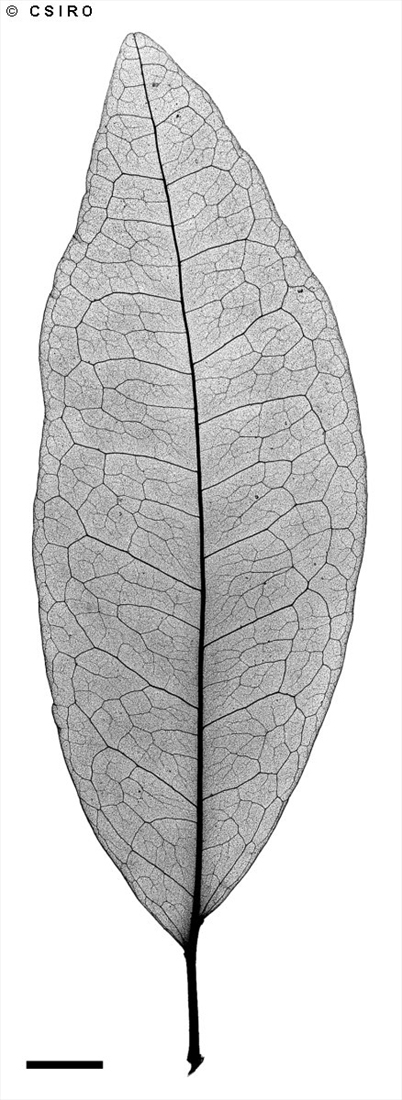Australian Tropical Rainforest Plants - Online edition
Croton acronychioides F.Muell.

Mueller, F.J.H. von (1864) Fragmenta Phytographiae Australiae 4: 142. Type: Queensland, Fitzroy River near Rockhampton, Bowman; Lecto: MEL 231235. Fide Forster (2003).
Thick-leaved Cascarilla; Large Green-leaved Cascarilla; Thick-leaved Croton; Croton, Thick-leaved
Can grow into a small tree but usually flowers and fruits as a shrub 2-3 m tall.
Leaf blades about 10-13 x 4-5.5 cm. Leaves aromatic when crushed. Two pale raised glands present on the edge of the leaf blade at its junction with the petiole. Stellate or peltate scales present on the young leaves and persisting on the petioles and twigs. Oil dots visible with a lens when viewed on the upper surface of the leaf blade using transmitted light. Stipules small and inconspicuous, about 1.5-2 mm long. Lateral veins form loops well inside the blade margin.
Inflorescence, clothed in stellate hairs, consists of a raceme of cymes, each cyme consisting of a female flower between two male flowers. Sepals and petals with tufts of tortuous white hairs at the apex. Male flowers: Flowers with six stamens (one central surrounded by a ring of five) attached to a dense woolly disk at the base of the flower. Female flowers: Flowers with only one perianth whorl, petals absent. Ovary densely hairy. Styles three, each ending in three stigmas.
Capsules clothed in stellate pale brown scales. Styles and/or stigmas persistent at the apex of the fruit.
Features not available.
Endemic to Australia, occurs in NEQ, CEQ and southwards as far as north-eastern New South Wales. Altitudinal range from near sea level to 1000 m. In the northern part of its range grows as an understory plant in the drier types of rain forest often associated with Kauri Pine (Agathis robusta).





